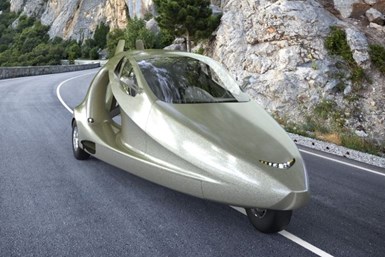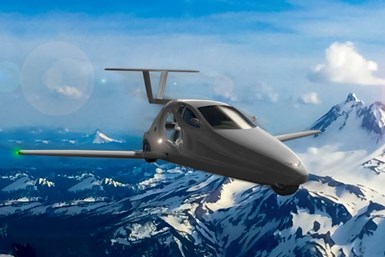New Hampshire Readies Flying Cars…for Roads
“Jetson Bill” targets roadable aircrafts
#regulations
The first step in getting flying cars off the ground could be allowing them to drive to the airport.

Samson Switchblade (Image: Samson Sky)
New Hampshire moved such dual-purpose vehicles closer to the runway with the passage of the so-called “Jetson Bill,” which Gov. Chris Sununu signed this week.
The legislation, which is said to be the first in the nation pertaining to flying cars, tentatively approves the use of “roadable aircraft” on public roads. This includes provisions for road registration and the establishment of rules for inspections and accidents.
Study Time
The first step is to set up a commission, which is directed to issue an interim report by Nov. 1. Final recommendations are due by November 2021.
The inspection policy is expected to piggyback on current FAA requirements. Owners would just have to pay an additional fee for road use and a special license plate.
Airport Required

There are no plans to allow the vehicles to land or takeoff from public roads. Such operations would have to be done from an airport and require a pilot’s license.
But once grounded, users could simply fold up the wings and drive away.
What’s Next
Companies have been testing prototype flying cars for years and waiting in the wings for them to be approved.
The list includes:
- Pal-V International, a Dutch company whose Liberty model that has a combined air-ground range of about 600 miles
- Terrafugia, a Massachusetts-based company that was purchased by Chinese carmaker Geely in 2017
- Samson Sky, an Oregon-based startup that debuted its Switchblade model in 2018

Hyundai Uber plane (Image: Hyundai)
For now, though, more attention is being devoted to air taxis. These typically are helicopter-like vertical-takeoff-and-landing (VTL) aircrafts that are designed to shuttle passengers relatively short distances to speed commute times and reduce ground congestion.
VTLs are meant only for air travel. But several carmakers are developing them, including Aston Martin, Daimler, Honda, Hyundai, Toyota and Volkswagen.
Airbus, Bell Helicopter and Boeing also are in the mix. But the leader at this point appears to be Uber, which aims to extend its ride-hailing service to the sky in cities across the world in the coming years.
RELATED CONTENT
-
Daimler Cleared to Test Advanced Robotic Cars on Beijing Roads
Daimler AG has become the first foreign carmaker to win permission to test advanced self-driving vehicles on public roads in Beijing.
-
Carmakers Ask 10 States to Help Bolster EV Sales
Carmakers are asking for more support for electric cars from states that support California’s zero-emission-vehicle goals, Automotive News reports.
-
CARB Predicts 10x Hike in Fuel Cell Vehicles by 2024
California expects the number of fuel cell-powered vehicles registered in the state will surge to 23,600 units in 2021 from 4,800 through May of this year and reach 47,200 by 2024.

